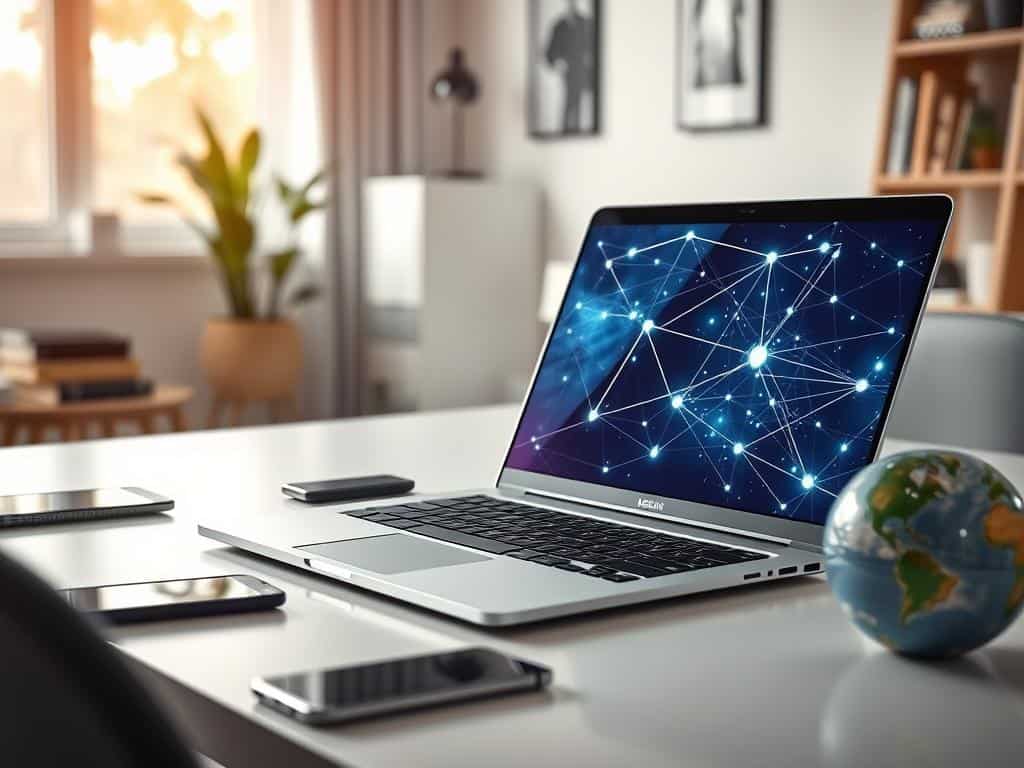Did you know nearly 70% of employees work remotely at least once a week? This big change in work culture makes Remote Access very important. It helps keep productivity and teamwork going strong. Being able to connect to my PC from anywhere boosts flexibility and lets me work well, no matter where I am.
If you use Windows 10 Pro, Enterprise, or Windows 11 Pro, I’ll show you how to turn on Remote Desktop. Whether I’m logging in from somewhere else or letting colleagues join, knowing how to set it up is key. In this guide, I’ll walk you through setting up remote access, making sure connections are safe, and managing who can get in. Let’s dive into how to get the most out of Remote Desktop for remote work.
Key Takeaways
- Only specific Windows editions, like Pro and Enterprise, support Remote Desktop.
- The Remote Desktop app is available on multiple platforms including Mac, iOS, and Android.
- If you have admin rights, you can access your remote PC by default; permissions can be adjusted.
- Network Level Authentication (NLA) is key for better security during remote connections.
- Windows 11 makes it easier to add accounts for remote access.
Understanding Remote Access for Your PC
Remote access has changed how we use technology, making it more flexible and efficient. It’s important to know what remote access is, the role of remote work tools, and how remote desktop connections work.
What is Remote Access?
Remote access lets me connect to another device from afar. I can control my PC from anywhere, like home or a coffee shop. This makes working on files and apps easier and helps with troubleshooting without being there.
It’s key for modern work, making tasks easier and giving full access to network resources.
The Importance of Remote Work Tools
Today, having good remote work tools is vital. They help with flexible work and team collaboration, no matter where team members are. Remote access lets me work well and save costs, responding quickly to issues.
These tools also help balance work and life, making work more efficient.
Overview of Remote Desktop Connection
Microsoft Remote Desktop Connection (RDC) is a key feature in Windows. It makes accessing my desktop from afar easy. It works on Windows, Mac, iOS, and Android, ensuring secure connections.
RDC offers simple file sharing and troubleshooting, making remote work efficient and easy.

How to Enable Remote Access on Your PC
Setting up remote access boosts my productivity. It’s easy to do. I can control my system from anywhere and keep my data safe.
Step-by-Step Guide to Enable Remote Desktop
To start, I go to Settings > System > Remote Desktop. There, I turn on Remote Desktop. It’s important to keep my computer awake and discoverable on the network.
I also need to know my PC’s name. This is key for connecting from another device.
Configuring Settings for Secure Connections
Secure connections are essential. I allow access only from computers using Network Level Authentication (NLA). This checks my identity before connecting.
I also check my firewall settings. They must allow Remote Desktop connections. These steps help keep my system safe.
Granting Permissions for Remote Users
Managing permissions for remote users is important. Administrators can access my system automatically. But I can also add others by choosing “Allow users to connect remotely to this PC.”
It’s important to have strong passwords for each user account. For extra security, setting up port forwarding or a VPN can help.
Conclusion
In today’s world, Remote Access is key. It’s changed how we work, thanks to COVID-19. Now, I can work from anywhere, making my home office more productive.
It also saves money. Using Remote Desktop cuts down on IT costs. Plus, it makes managing software easier with hosted solutions.
But keeping my data safe is a big deal. I use strong passwords, MFA, and a Virtual Private Network (VPN). These steps help me stay secure while working remotely.